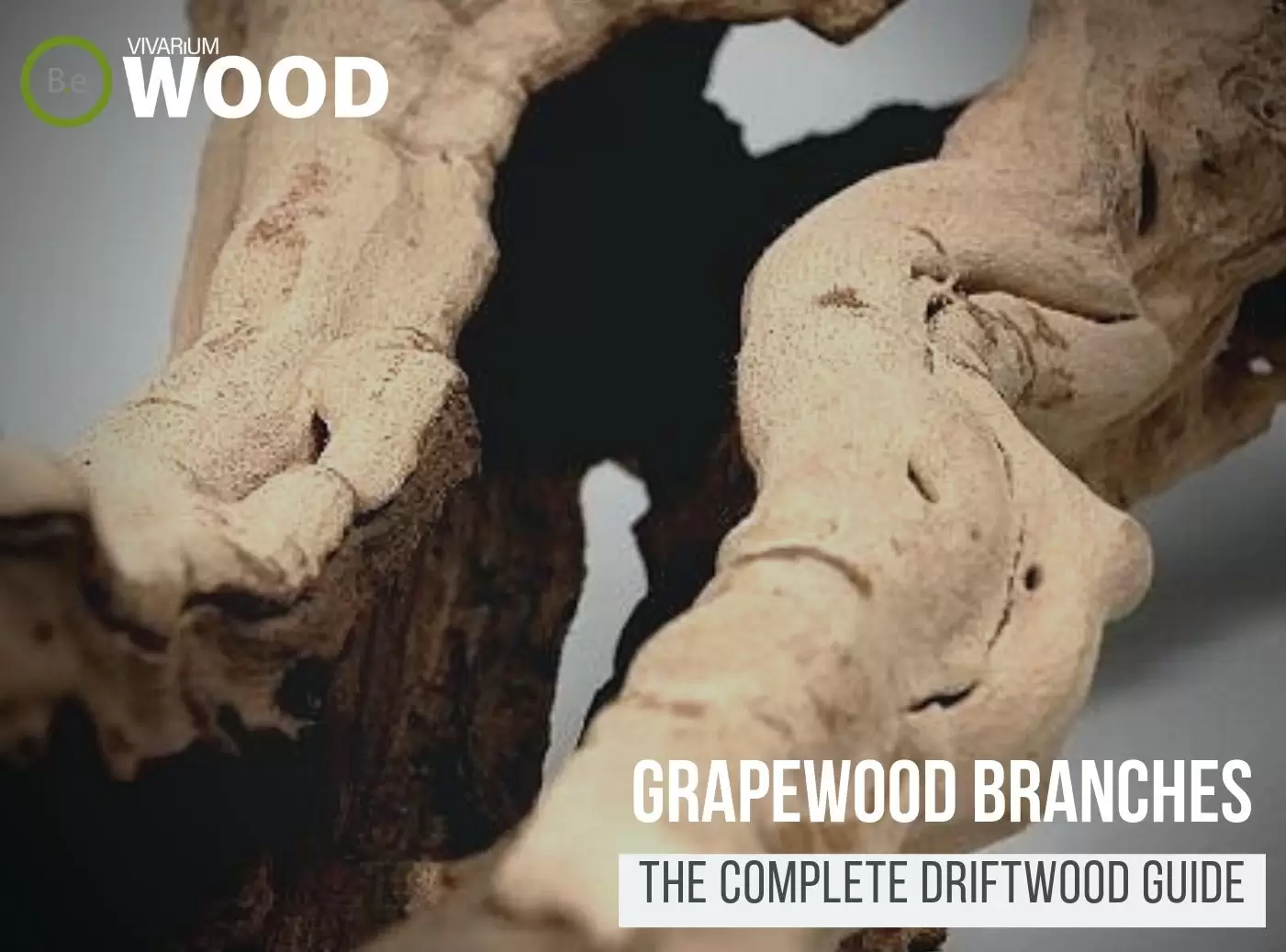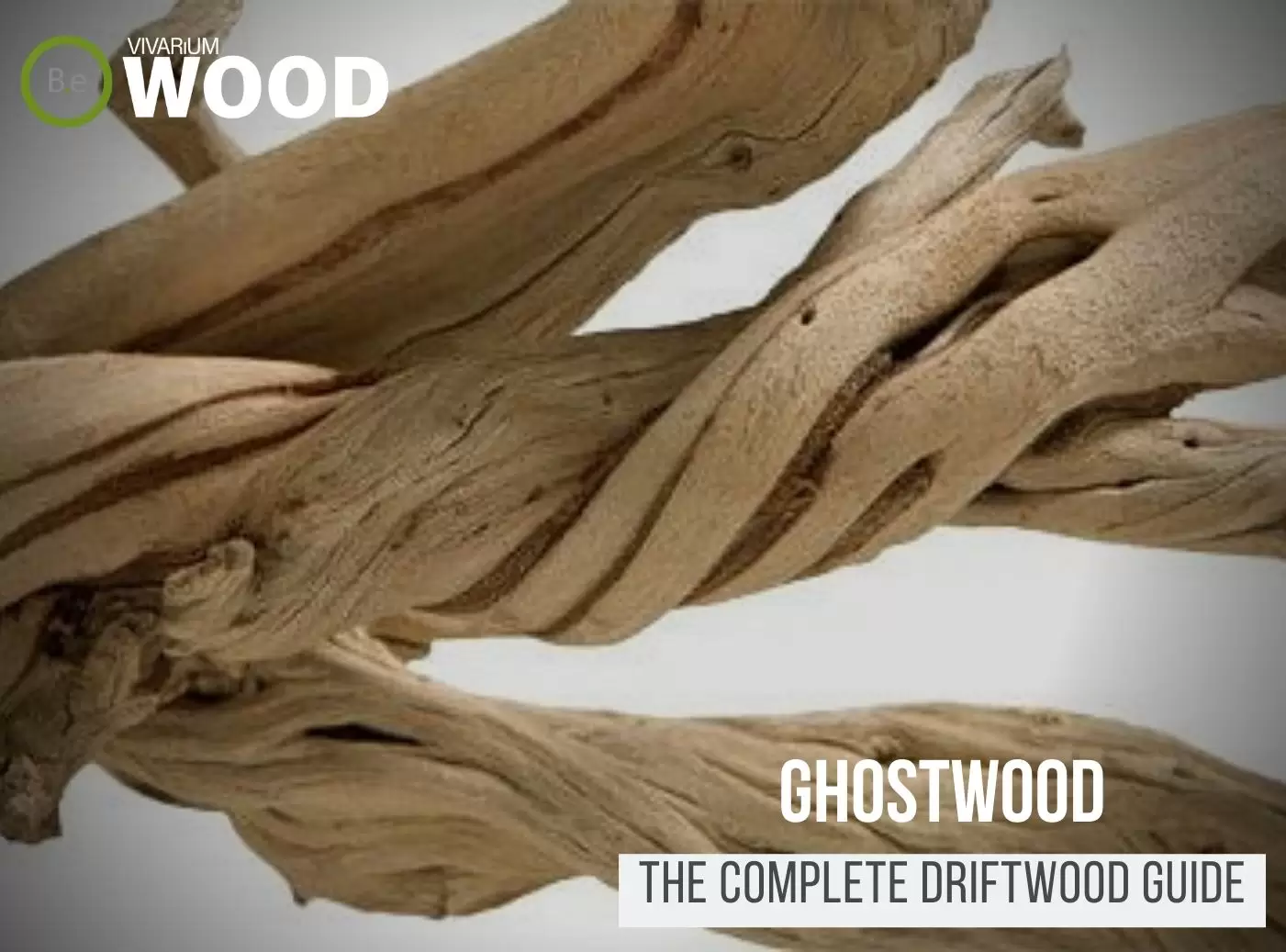Spider Wood has been a relatively new type of driftwood used in aquascaping recently.
With the amount of character this wood exhibits along with its colorful nature, one glance at it in a vivarium and you’ll know why.
The two most common questions we get asked about this driftwood are;
What is it exactly and is it right for my setup?
This article will provide those answers and much more as we go in-depth about hardscaping wood.
Table Of Contents:
ToggleWhat Is Spider Wood?
Spider Wood is a type of driftwood that is becoming very popular in the aquarium niche.
The wood is acquired from the root section of various species within the genus Rhododendron.
These perennial plants are a type of shrub that grows shallow roots through and sometimes above the soil.
This shrub root garnishes its nickname “Spider Wood” from the unusual formation of its branches often resembling a dead spider.


Spider Wood Facts
Spider Wood is considered a softwood since it remains evergreen during its lifetime.
This leads to a fast-growing plant that will result in material that’s lighter than many other types of driftwood.
In some parts of the world, this wood is simply referred to as Rhododendron roots due to its origin.
Other common names used within the hobby include Azalea Roots, Rhododendron Roots, Indian Spider Wood, and Red Spider Wood.
Description
Spider Wood is a bit of a challenge to describe easily thanks to its random growth pattern and variation.
The best way to think of it would be to use the dead spider analogy.
Rhododendron roots shoot stalks in no specific order.
Branches may appear twisted, straight, or even curled back towards the initial mass.
The color of this softwood will vary based on the specific species as well as the condition it is found in.
Red Spider Wood will appear red or reddish-brown.
Other species of this driftwood will range from beige to true brown.
Spider Wood can vary in size as well.
Depending on the supplier, pieces will range from a couple of inches to about 18 inches.
On some occasions, larger sections of roots are collected spanning several feet in length.
This is great for concept designs where multiple pieces can be combined to make larger centerpieces in vivariums.
One final note worth mentioning is the weight of this driftwood.
Spider Wood is one of the lightest types of driftwood used within the hobby.
This will make it a challenge to sink in aquariums.
Habitat
Spider Wood originates in dense forest areas around North America as well as parts of Asia.
The environment is typically full of shade and bright from indirect sunlight.
The soil that these roots will spend their lifetime in is acidic and well-drained allowing it to easily spread across large areas of land.
Environmental Influence
Spider Wood can have a slight influence on the surrounding areas it’s placed within.
Being extremely light driftwood it doesn’t have as much impact on pH as the denser woods.
On the contrary, this wood will still leech small amounts of tannin into the water gradually.
This is beneficial for freshwater tanks that thrive in parameters below 7 pH.
Water discoloration may not take place, but if it does give off a yellowish tint to the water, small water changes will solve that issue.
Vivarium Type
Spider wood is great for both aquariums as well as terrariums.
This versatile wood will provide a healthy source of food to invertebrates as it breaks down underwater.
Use this wood risk-free in any type of vivarium that doesn’t require water hardness to be high.
Here is a recommended list of vivariums Rhododendron roots are commonly used in:
- Paludariums – Half aquatic/ half terrain-based enclosure.
- Ripariums – Mostly aquatic-based enclosures with some terrain features present.
- Terrariums – Fully terrain-based enclosures with little to no aquatic features.
- Aquariums – Fully aquatic-based enclosure with no terrain features.
Vivarium Usage
Spider Wood can be used in several ways within a vivarium.
This type of driftwood is commonly used as both a hardscape as well as a substrate for many vivarium plants, biofilm, and algae.
They last longer above water and are in most cases sandblasted to remove excess dirt and debris.
In aquariums or ripariums, this wood can be used for some years before fully decaying.
As the wood begins to deteriorate, a biofilm is formed along the surface.
Shrimp along with many other types of aquatic animals will feed off of the film digesting healthy nutrients.
In terrariums and the land portions of a paludarium, Spider Wood can be used right away and will continue to age giving off a settled look.
Birds, reptiles, and amphibians will use this wood to stand or climb to higher positions within the enclosure.
Azalea Roots being placed above water will not have to be pre-soaked but should still be securely placed.
Advantages
Spider Wood is excellent driftwood for all-level hobbyists as it doesn’t present the potential dangers harder wood will.
The exotic look will add detail to any enclosure it is placed in and will hold up for a relatively long time before decay.
The low levels of tannin released are easily maintained with presoaking and water changes.
Spider Wood will provide a place for inhabitants to hide, breed, and eat.
This type of driftwood is non-toxic, making it safe for all kinds of inhabitants.
Disadvantages
One of the biggest drawbacks of using Spider Wood in aquariums is its buoyancy.
This can be a pretty stubborn wood to sink.
Have patience when working with this driftwood underwater and allow plenty of prep time when using it to aquascape.
Due to the low water parameter influence, this wood would not be ideal for hard water enclosures that require the pH to be above 7.
The wood does float when it’s dry so that may require periods of pre-soaking or anchoring.
One final disadvantage of Spider wood is its rate of decay.
This wood is not considered rot-resistant.
It will last much longer than most softwoods but overall it does still have a shelf-life.
Buy Spider Wood
When looking at Spider Wood for sale, expect a few key indicators you are buying the best quality wood.
These woods should always be free of pests.
The source of driftwood should come from a contributor who Preferably specializes in the pet industry.
Avoid taking these from hardware stores or outdoors unless you can assure the wood hasn’t been treated with toxic chemicals or pesticides.
Click the image below to find out more about the current price and other relative info:


Spider Wood Preparation
When acquiring Spider Wood for the first time, it may need to be properly conditioned before going into a vivarium.
All pieces should be inspected to make certain no pest or rot has taken residence within the wood.
Once checked, it can be cleaned and placed securely within the desired enclosure.
Sterilizing Spider Wood
Above all, It is always a good idea to sterilize driftwood when you first receive it.
A light brushing will knock excess dirt and sand off.
If additional cleaning is required, pressure washing Spider Wood would be the next step in cleaning it.
If the pieces of wood are small enough to fit in a pot, boiling the wood is a definite way to kill bacteria as well as saturate the wood from tannins that will lead to water coloration.
Sinking Spider Wood
Spider Wood is without a doubt one of the hardest driftwood to sink.
That doesn’t mean it’s not possible.
There are a number of ways to combat buoyancy, it just depends on the amount of time and effort being applied.
If you are opting to presoak the driftwood prior to usage…
Expecting this method will take several weeks depending on the size of the wood piece.
Use a heavy, inert object to hold the wood under warm water.
The hotter the water, the quicker the overall process will take.
A faster method of sinking will be to mount the wood piece to heavier rock.
Slate rocks are perfect for this because they are dense and narrow making them easy to cover up with substrate.
Drill a hole into the rock and screw the wood into the top of the rock and that should be enough to hold the driftwood in place.
Driftwood Similar To Spider Wood
Adding diversity to an enclosure is key to an aesthetically pleasing enclosure.
Try mixing up the look of your vivarium with different woods that can easily co-exist in the same types of environment.
Furthermore, if for some reason you find this wood hard to acquire or would like to consider something similar to it…
Here are some other kinds of driftwood you might find may do well with or in the place of Spider Wood:
Conclusion
In summary, Spider Wood is great for most enclosures.
It has a very distinctive appearance and is completely safe to have around inhabitants.
The only real negative about this driftwood is the fact that it can be challenging to sink in the water at the beginning.
If you are learning about this unique type of driftwood for the first time, I truly hope this guide was helpful and provided a good understanding of how to properly manage it.
Frequently Asked Question
Spider wood, is a type of softwood, typically found in Central and South America. It‘s easy to work with, lightweight, and has a unique, intricate grain pattern. It can be used in a variety of ways, from interior decor to musical instrument components.
No. Spider Wood and driftwood are two completely different types of wood. Spider Wood is a type of porous cavity–forming bamboo, while driftwood is a type of tree branch or log that has been weathered and eroded away by water or wind from its origin.
No, you do not need to boil spider wood. Boiling spider wood is only necessary if you plan to use it in tinctures or extracts.
Spider wood is a great option for aquarium décor because it naturally sinks when placed in water. The exact time it takes for spider wood to sink varies depending on the size and density of the piece, however typically it takes anywhere from a few hours to several days for the wood to fully submerge.
Yes! Boiling spider wood will cause it to sink in water because boiling water increases the density and weight of the spider wood.




